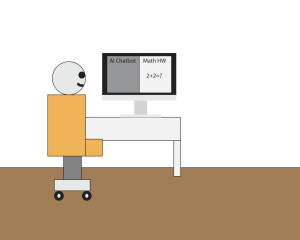Online school poses a threat to accessible education
High school students across the nation have had to adjust to a new form of remote learning, online school, as school facilities have been closed to ensure social distancing. In order to increase participation in remote learning, Austin Independent School District has supplied students with Chromebooks and WiFi busses.
May 26, 2020
Public school has its fair share of problems. From bullying to overwhelming amounts of work, students often talk about their grievances with public schools. While those problems are very much real, along with a few others, online school has raised more issues than expected.
Due to the Coronavirus, schools in Texas have been out since late March and will be for the rest of the year. Since then, online learning has been a huge curve for teachers and students alike. However, the lack of focus at home and no access to WiFi for every family make it clear that online school should not become the new normal. Forcing online school alienates low-income families leaving them to fend for themselves when it comes to education which most families are not prepared to do.
Many students who struggle with public school often consider online school. Online school is often viewed as the more easy-going option, with no classmates and the ability to always show up in your pajamas. However, a lot of students need the accountability that online school lacks. Focusing at home is incredibly difficult. Trying to understand new concepts while not having a teacher on hand is not the best way to learn. American Institutes for Research and the University of Chicago Consortium on School, found that students who took online algebra credit recovery courses scored lower test scores compared to students who took a face to face course; students who took the online course also stated that the class was more difficult compared to their offline counterparts. Overall, it seems that online school is less effective in helping the kids that really need help understanding the information.
The people who are suffering the most from this shift are low-income families. According to the Pew Research Center, only 56 percent of households with income under $30,000 have access to broadband internet. The location of your family can also prevent your internet connection with kids who live in rural areas who have issues getting online. Even if you were to provide every student with a laptop, financial and location issues would still be out of the hands of the school districts. Families who are not fluent in English are mostly excluded from online classes. In fact, more than 15,000 students in Texas are enrolled as ELs, English learners, with one of the largest populations of ELs in Texas being Austin. The current program in use is not compromising to these students. COVID-19 is going to be our new reality until a vaccine is created and we need to prepare for the possibility of not returning to school in the fall, this means making more resources accessible for non-English speakers and low-income families.
There is a lot of talk of how things will go back to normal, but we need to start viewing COVID-19 as the new normal. School districts need to start implementing changes to the current online system to help students who lack focus, have low-income, live in rural areas, or are not fluent in English.










